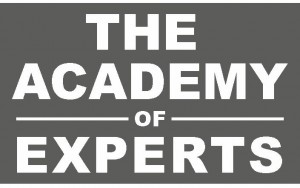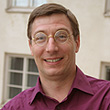Who are “the experts”?
August 1, 2010 Filed under Blog, Uncategorized
 One of the features of Eloquent Science is the “Ask the Experts” columns. (The idea for these sections came from a discussion with Prof. Tracey Holloway, University of Wisconsin.) I don’t say much about who these people are in the book, but you may be interested to know a little more.
One of the features of Eloquent Science is the “Ask the Experts” columns. (The idea for these sections came from a discussion with Prof. Tracey Holloway, University of Wisconsin.) I don’t say much about who these people are in the book, but you may be interested to know a little more.
Y. Hancock is a lecturer at the University of York and a quantum theoretical physicist originally from Melbourne, Australia who designs future nanotechnologies and devices. Y. Hancock also has a keen interest in science education and specializes on the topic of communicating difficult science concepts through analogy and written prose to very young children.
Chris Samsury is a Senior Director of the Weather Channel, with almost ten years of management experience. Previously, he worked as a research scientist in the NOAA/Atlantic Oceanographic and Meteorological Laboratory’s Hurricane Research Division.
Mark Stoelinga is a senior scientist at 3TIER, Inc. Formerly, he was a Research Associate Professor in the Department of Atmospheric Sciences at the University of Washington. His research interests focus on synoptic, mesoscale, and microphysical structures and mechanisms within midlatitude weather systems.
Roger Wakimoto is the Director of the National Center for Atmospheric Research. His publications are well known for their innovative overlays of photos with scientific data.
Joe Schall is the author of numerous style manuals, including Style for Students: Effective Technical Writing in the Information Age and Writing Recommendation Letters: A Faculty Handbook. He taught writing at The Pennsylvania State University for 20 years and edits reports for the National Institute for Occupational Safety and Health.
Zhiyong (Ellie) Meng came from China to United States in 2003 to pursue a Ph.D. in atmospheric sciences. She graduated from Texas A&M University in 2007, is a research professor at Peking University, and serves as an Associate Editor for Monthly Weather Review.
Mary Golden is the Chief Editorial Assistant of Monthly Weather Review. She is a technical editor and a former writer and editor for Genetic Engineering News and the Geological Society of America.
Mike Friedman is the Journals Production Manager for the American Meteorological Society and also has been a Technical Editor at AMS since 2001. As a published author himself with a Ph.D. in atmospheric science from the University of Wisconsin, he has experience as both an author and publisher.
Ken Heideman is the Director of Publications for the American Meteorological Society. He is a published author, he worked at the predecessor to the NOAA Forecast Systems Laboratory, and he graduated with a M.S. from Pennsylvania State University.
Jim Johnson is a retired operational meteorologist with 41 years of experience including the U.S. Air Force, the private sector, and the National Weather Service. His meteorological interests are severe convective storm forecasting, frontal and density current structure and synoptic-scale meteorology.
Tom Hamill is a research meteorologist with NOAA’s Earth System Research Lab, an Editor at Monthly Weather Review, and program manager for NOAA’s THORPEX program. His research specialties are ensemble prediction methods and statistical meteorology.
David Jorgensen is the Chief of the Warning Research & Development Division at NOAA’s National Severe Storms Lab, a former Chief Editor at Monthly Weather Review, and now the Publications Commissioner at the American Meteorological Society.
David Whiteman is a research professor at the Department of Meteorology at the University of Utah. He served as editor of Journal of Applied Meteorology during 1998-2000. His wife Johanna served as the editorial assistant during that time.
Pamela Heinselman is a research meteorologist at the NOAA/National Severe Storms Laboratory, where she uses phased-array and dual-polarimetric radars to advance understanding of severe-storm evolution.
Roger Samelson is a professor in the College of Oceanic and Atmospheric Sciences at Oregon State University. He has served on the editorial board of the Journal of Nonlinear Science (1999-2007) and as an editor of the Journal of Physical Oceanography (1999-2006).
Svetlana Bachmann has been a Senior Research Engineer at Lockheed Martin Maritime Systems and Sensors in in Syracuse, New York, since 2008. After receiving her B.S. degree in Electrical Engineering in Russia, she obtained her M.S. in Electrical Engineering and Ph.D. in Engineering from the University of Oklahoma where she held a postdoctoral position focusing on weather radar research and development.
Chuck Doswell works part-time as a research meteorologist at the University of Oklahoma, a consulting meteorologist, and semi-professional photographer, having retired after 32 years of service with various federal agencies. His research interests include severe convection, weather diagnosis and prediction, forecast verification, and objective analysis. More of his advice on communication skills can be found on his web page http://www.flame.org/~cdoswell/communication.html.
Valliappa Lakshmanan is a research scientist at the University of Oklahoma and NOAA/National Severe Storms Laboratory. He employs machine intelligence to detect and predict severe weather phenomena.
Stephanie Kenitzer was the public relations director for the American Meteorological Society from 1999-2009. She has nearly 20 years of experience in public relations serving public relations agencies, private companies, government agencies and nonprofits.
Keli Pirtle Tarp is a NOAA Public Affairs Specialist based in Norman, Oklahoma, where she supports five weather-focused organizations ranging from research to forecasting to support. She has more than 20 years of public relations experience.
Eve Gruntfest is co-director of WAS*IS, director of the Social Science Woven into Meteorology (SSWIM) program at the University of Oklahoma, and Professor Emeritus of Geography and Environmental Studies at the University of Colorado at Colorado Springs. The WAS*IS Web page provides a wide range of resources that may provide useful examples of successful communication across disciplines and integrated physical/social science efforts (http://www.sip.ucar.edu/wasis).
Petra Klein is an Associate Professor in the School of Meteorology at the University of Oklahoma. She is known for her expertise in urban meteorology and as an instructor that integrates hands-on learning experiences and modules on writing skills in meteorology courses.



Comments
One Response to “Who are “the experts”?”Trackbacks
Check out what others are saying about this post...[…] the experts eloquentscience.com […]